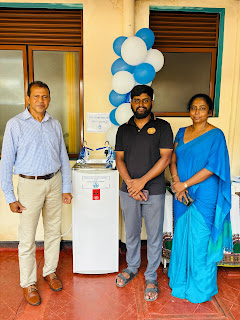Sri Lanka’s Aquatic Biodiversity and the Role of Eco-Tourism ☘️🌊
Sri Lanka is a country blessed with a wide range of natural water bodies. The island is rich in lakes, rivers, wetlands, lagoons, mangroves, and coral reefs. These ecosystems are home to a diverse array of fish, birds, amphibians, and plant species—some of which are found nowhere else in the world. This rich variety of life in water bodies is known as aquatic biodiversity. It is essential not only for the natural environment but also for human survival.
Unfortunately, these vital ecosystems are now under serious threat. Pollution, overfishing, deforestation of mangroves, and global warming are destroying aquatic environments. Coral reefs are dying, fish stocks are declining, and wetlands are disappearing. Most people remain unaware of the severity of the situation. It is crucial to raise awareness—and eco-tourism can play a significant role.
Eco-tourism involves visiting natural places in a way that does not harm the environment. It also promotes learning from nature and supports local communities by encouraging tourists to spend their money locally. In Sri Lanka, there are several notable examples of water-related eco-tourism.
The Hikkaduwa Coral Sanctuary is one of the most popular destinations. Tourists observe coral reefs and marine life through glass-bottom boats or by snorkelling. Educational programs about coral ecology and marine pollution help raise awareness about conservation efforts.
The Muthurajawela Wetland is another key location. Guided boat tours introduce visitors to the wetland’s birds, fish, and plant life. Tour guides explain how wetlands prevent floods and purify water. Many tourists are surprised to learn how important wetlands are to both nature and people.
Further east, Kumana National Park features lagoons that support both birdlife and aquatic species. Visitors gain insight into bird species that rely on fish and the importance of healthy water systems. To the south, the Maduganga Estuary, dotted with mangrove islands, is explored by boat tours operated by local villagers. These tours help protect mangroves while creating employment opportunities.
Along the coast, ancient irrigation tanks such as Kala Wewa and Tissa Wewa hold freshwater fish and attract numerous bird species. These centuries-old tanks still support agriculture and fishing today. Promoting eco-tourism in such areas can help bring Sri Lanka’s traditional water systems to global attention.
The Rekawa Turtle Conservation Project also plays a key role in protecting aquatic biodiversity. Tourists visit the beach at night to witness sea turtles laying eggs. They also learn about threats like plastic pollution and fishing nets. Revenue from tourism supports nest protection and raises awareness in local communities about turtle conservation.
These examples demonstrate that eco-tourism can help conserve aquatic life while benefiting local communities and generating income for rural areas. However, eco-tourism must be managed carefully. Uncontrolled tourist numbers or exploitative activities can harm the environment. Regulations must be in place, tourists must follow them, and local communities must be actively involved in planning and decision-making.
Sri Lanka has the potential to promote eco-tourism sustainably. By protecting marine biodiversity and educating both visitors and locals, we can build a better, more responsible future. Eco-tourism is more than travel—it is about responsibility, learning, and respect.
Written by : Kushantha Shanal
#AQUATICS
#ASA
#USJ

















